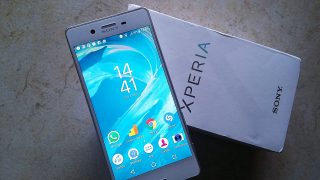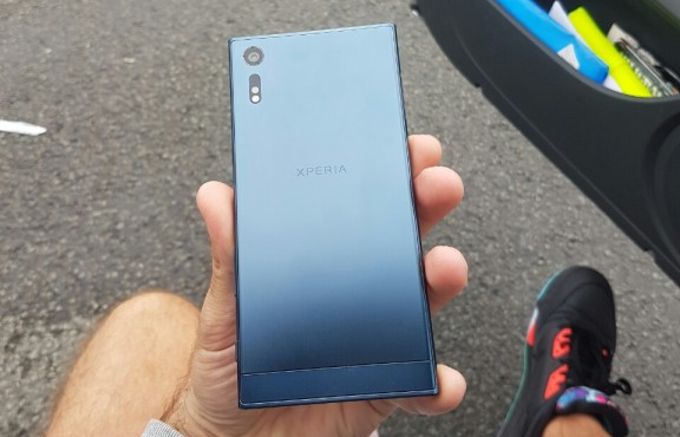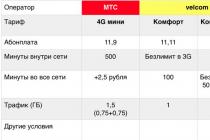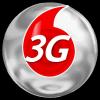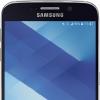Xperia XZ Premium, whose main advantage was not Snapdragon processor 835, but an incredibly cool camera, at least Sony itself claims so. This flagship has already fallen into the hands of one of the journalists, the camera of which he hastened to test in various conditions and compare these results with those on the iPhone 7 Plus, which can rightfully be considered one of the best camera phones.
But when we look at the front, we are rather disappointed. If the screen aspect ratio is completely ignored, the slab itself delivers excellent picture quality. Colors are delivered just fine, the screen can display a wide range of colors with great intensity. Note, however, that the screen has a slight tendency to pull in blue, but it is indeed very light.
Additional cameras are usually mounted above the screen of the device and are mainly used for video calls, gesture recognition, etc.
The brightness is excellent without being blinding in low light conditions. So it's very good on this side. In detail, they found that the subpixel alignment was completely non-linear as it was in chevrons. Result: Screen areas are empty and should be "connected" by extrapolation. Extrapolation results in loss of image quality.
As a place to test the camera Sony Xperia XZ Premium and Apple iPhone 7 Plus was selected from one of the peninsulas in Portugal. Beauties! Note that testing was carried out on automatic settings camera, that is, without setting ISO, focus, white balance and other details. The final images were not processed in a graphics editor.
Unfortunately for the Japanese, some feel somewhat deceived, and the credibility of his speeches is striking. Too bad. Only in June the model was finally finished. Here are some test results that will tell you more. This can be explained by the fact that the smartphone is quite thick. As for the rest of the uses, it's just a pleasure to use. The light interface, combined with these characteristics, should also do something.
The interface just says so. If we see that the glass is half full, we say "we don't change the winning team". However, we regret that the availability installed applications quite a bit of. What worries me is that these applications cannot be uninstalled.

Sony Xperia XZ Premium

iPhone 7 Plus

Sony Xperia XZ Premium
⇡ Design, ergonomics and software
The app drawer is pretty good to use with round icons nice and colorful on a dark background. We really like to home page the ability to search for applications simply by scrolling up and down. For example, a smartphone can detect when you are in a movie theater and the room has gone dark. There, it will automatically prevent the LEDs from showing, automatically dim the screen to the minimum, and switch to silent mode. Everything is very fluid, simple and intuitive, with small additions that feel good, which further enhances the experience.

iPhone 7 Plus

Sony Xperia XZ Premium

iPhone 7 Plus
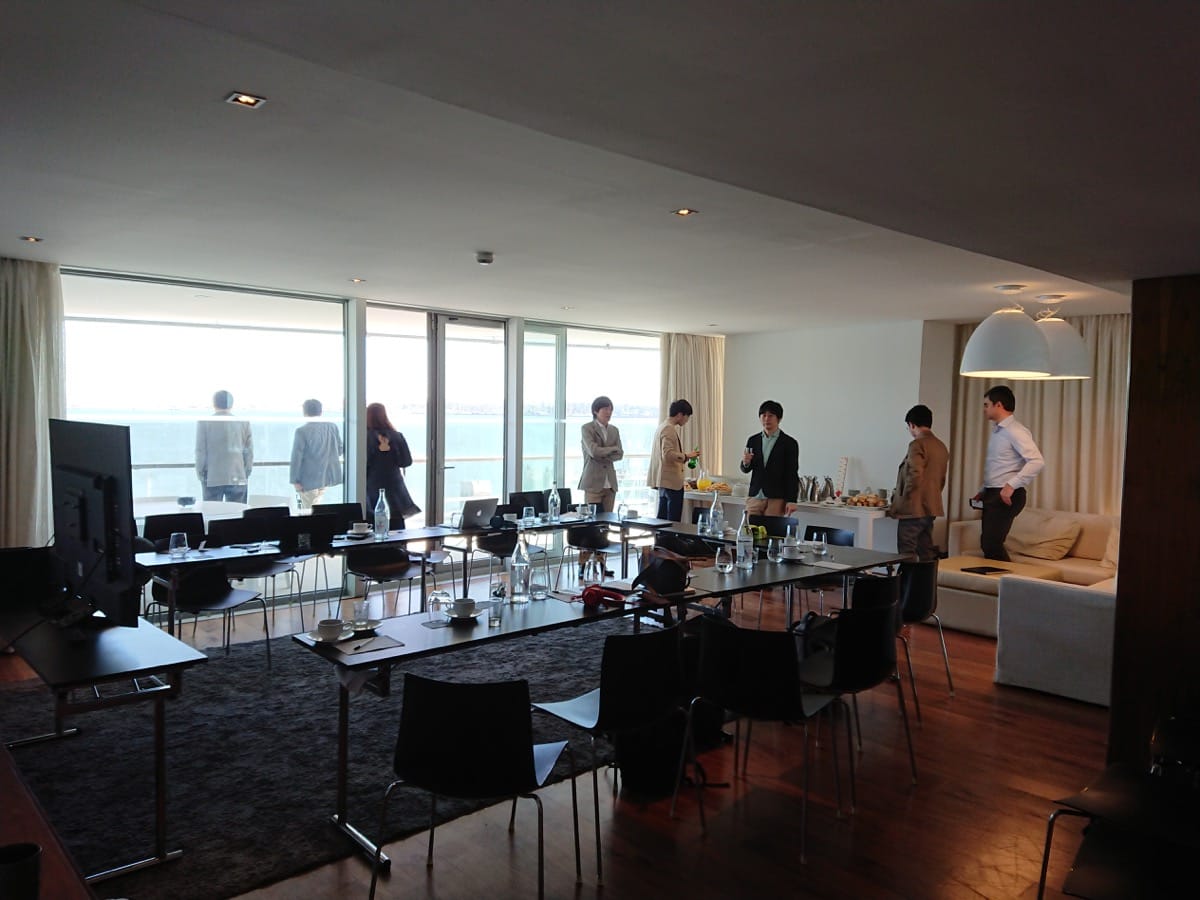
If the Japanese aren't the best in the area, it still does a good job and offers quality sound worthy of high class. The sound is quite balanced, full and no distortion was found. Notice, however, a little breath and strength.
Placed on the front, they are ideal for all multimedia applications. Whether you're gaming, watching videos or listening to music, your hands never block the audio output and the sound always takes up space. With headphones, the sound quality increases, but as usual, it also depends on the headphones and headphones from everyone, but also listening to the audio format.
Sony Xperia XZ Premium
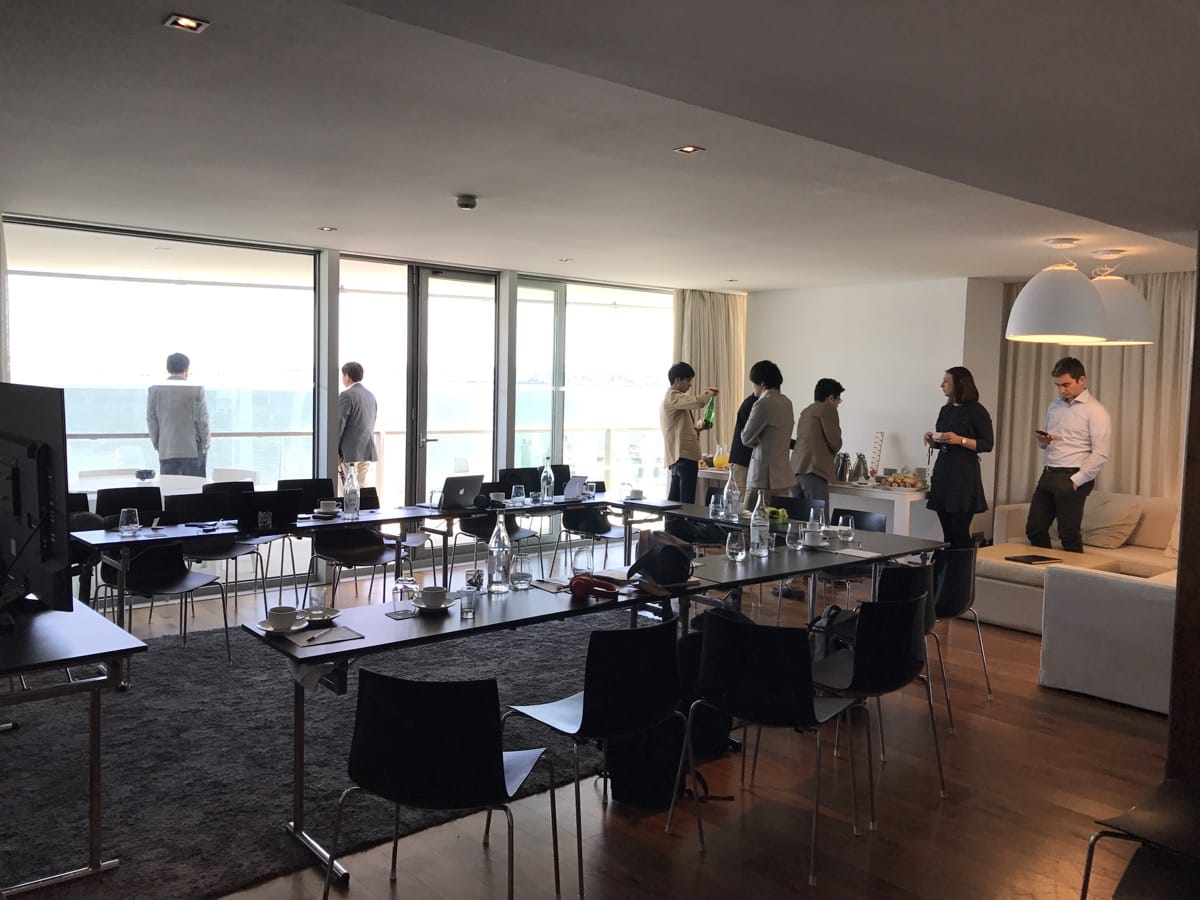
iPhone 7 Plus
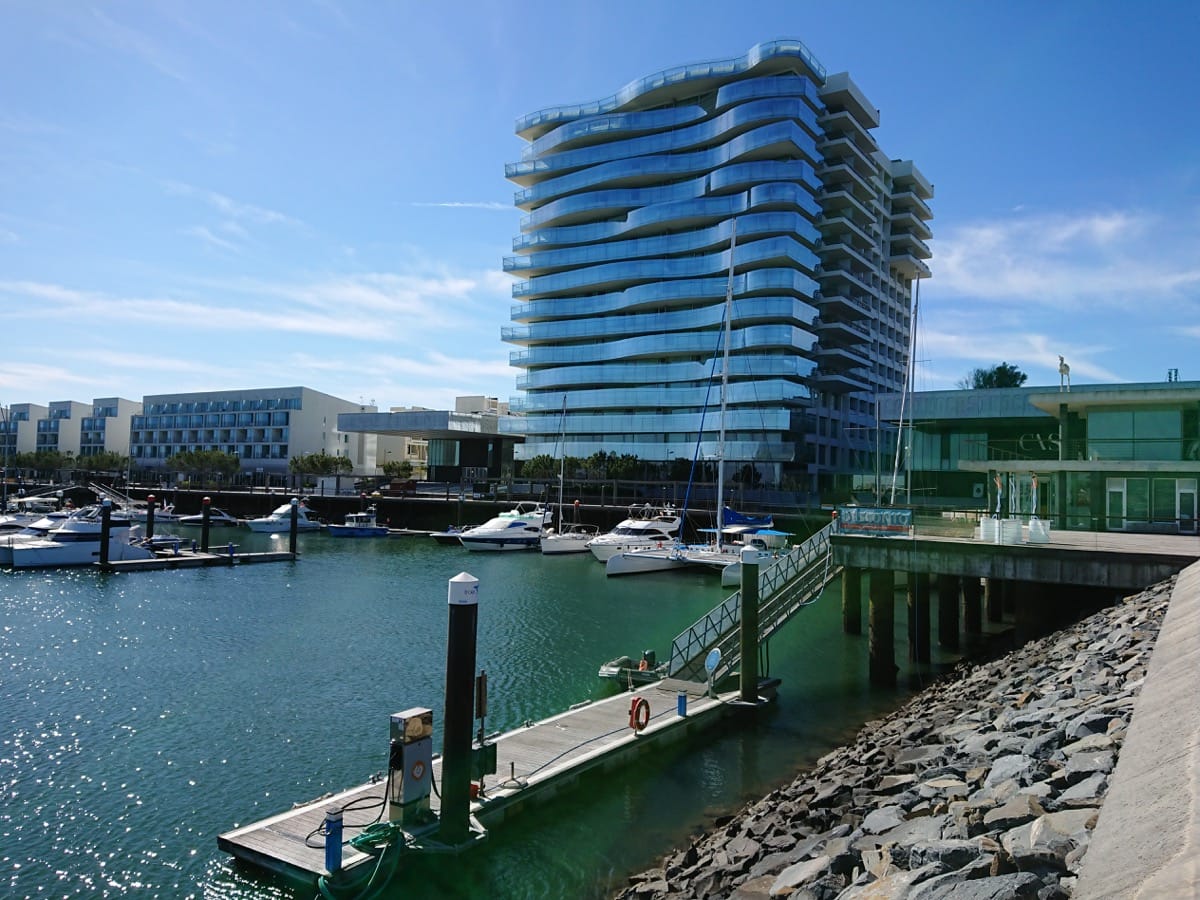
Sony Xperia XZ Premium
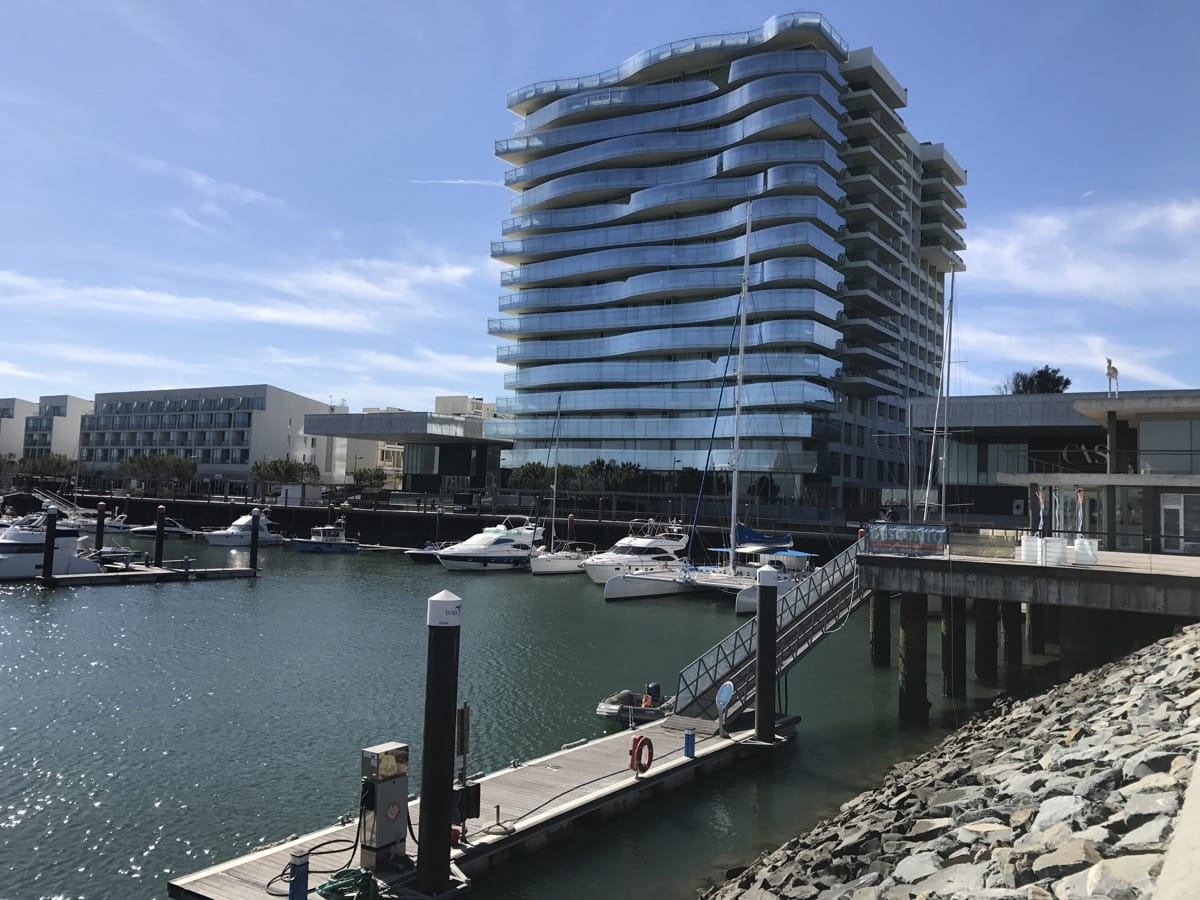
This is probably one of best devices at the moment. In practice, the conversations are really very clear and very pleasant. The sound from the communication speaker is excellent. Not once did my conversations silt up, and there was no breath. Therefore, in the field of communication is impeccable.
The accuracy difference is about 5 meters, which is not always better when you are in walking mode. Other models work better in this field, but we'll think about it a bit. Also note the possibility of predictive catches. Let's start with the photo part. Several very disappointing points have been fixed, even if others are still present.
iPhone 7 Plus

Sony Xperia XZ Premium

iPhone 7 Plus

Sony Xperia XZ Premium
Let's start with positive results. First, the rendering of colors is just wonderful. Where the Japanese is very strong, it is at the level of low light color management. At the moment, it clearly outperforms all of its competitors. This allows it to control a certain amount of smoothing in high light shots, but allows it to get good results in low light.
The image is much nicer to look at more smoothly. But this is done at the expense of details, and in distant photographs we see significant loss details. Let's start with the worst: focus. To get the bokeh effect, you have to work hard. Focusing is disastrous to select foreground or background. So much so that we are close to a nervous crisis, and we prefer to switch to manual mode to control the thing itself. A big weak point at a time when competitors are doing ultra-fast debugging for highly successful bokeh effects.

iPhone 7 Plus

Sony Xperia XZ Premium

iPhone 7 Plus

The mobile device radio is a built-in FM receiver
There, even in manual mode, the results are far from satisfactory, especially in macro, and we are disappointed not to talk about his creativity. Frustration is amplified by the trigger much longer than competing models. While the Japanese are trying to bring in little touches here and there, other manufacturers are doing Good work in the field of photography. The front photosensor, on the other hand, works wonders. Self-help lovers will love it if you turn off the "doll that doesn't work" mode. This mode smoothes faces a lot and gives the impression of a photograph of dolls.
Sony Xperia XZ Premium

iPhone 7 Plus
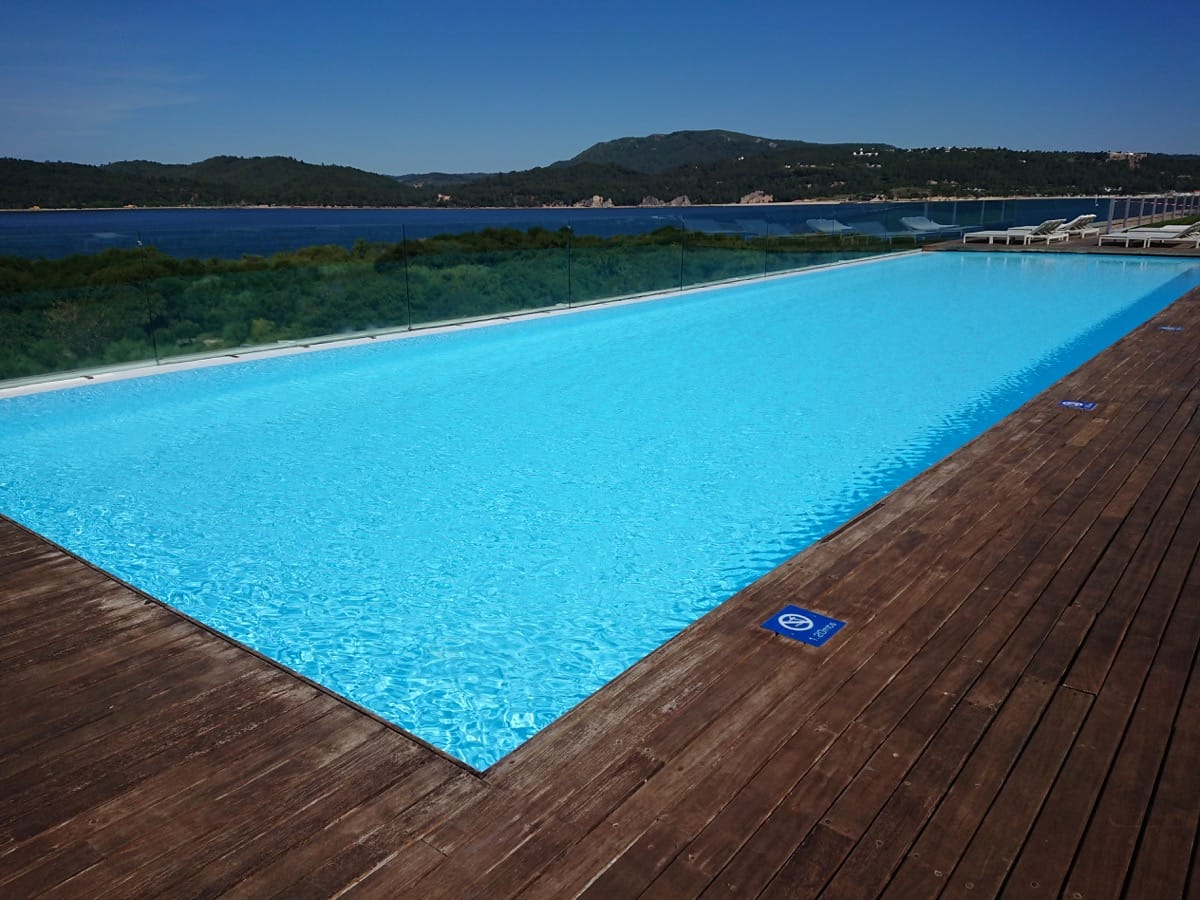
Sony Xperia XZ Premium

Without activating this mode, details are present and colors are very true to reality with a wonderful cast of skin tones that feel really natural. Although the Japanese master does a good job, but at a time when competitors are integrating optical stabilization, this is a challenge. Especially for a model at this price.
Latency is very important when you go from a dark environment to a clean environment and vice versa. For example, if you are filming the exit of a tunnel, the adaptation time to the new lighting conditions is too long. In any case, longer than some competitors. We have access to different regimes shooting, manual mode is quite complete and easy to handle.
iPhone 7 Plus
The photographs clearly show that the Sony Xperia XZ Premium renders the colors of all objects better than it does Apple flagship. If you look at the photo of the long wooden bridge, you can see a huge difference. Sony Smartphone It doesn't just shoot better, it does it much better. The detail of the picture taken on the Xperia XZ Premium is simply amazing. The top-end iPhone 7 Plus with a dual rear camera and a double optical zoom simply “soaps” the picture, making it not so clear and juicy.
Xperia XZ Premium test shots
However, we regret that it is difficult to get your hands on the super slow movement that requires adaptation time. This difficulty in capturing the desired moment makes this feature a gadget that we end up giving up just to not take the lead. Alas, he is not the long-awaited killer of fans and amateur photographers who will be disappointed by certain camera behavior. Videographers will not find their account with digital stabilization, which does not match optical stabilization competing models.
The level of detail in the Sony Xperia XZ Premium is incredibly high compared to the iPhone 7 Plus. This is especially true for objects located in the distance. So, if you zoom in on the picture, you can see a huge difference. In pictures taken on Sony flagship, everything is very clearly visible, but on the images taken on the device from Apple, there is a clear fuzziness.
It's cool, but it's also boring. However, some uses tend to affect autonomy more quickly. It can even reach a day and a half without jitter for standard use and two days for slightly lighter use.
Most of the time on a smartphone, using the camera or playing games tends to take a big hit to autonomy. On the other hand, two things made us mourn. First, video playback autonomy management is pretty poor. Obviously, if you are an online video lover, consider external battery. To be picky, we liked the fast fast reload and better management online video. But at this price, it is below what is expected from it. It seems that a real upheaval is needed for the Japanese to restore the heart of the general public.
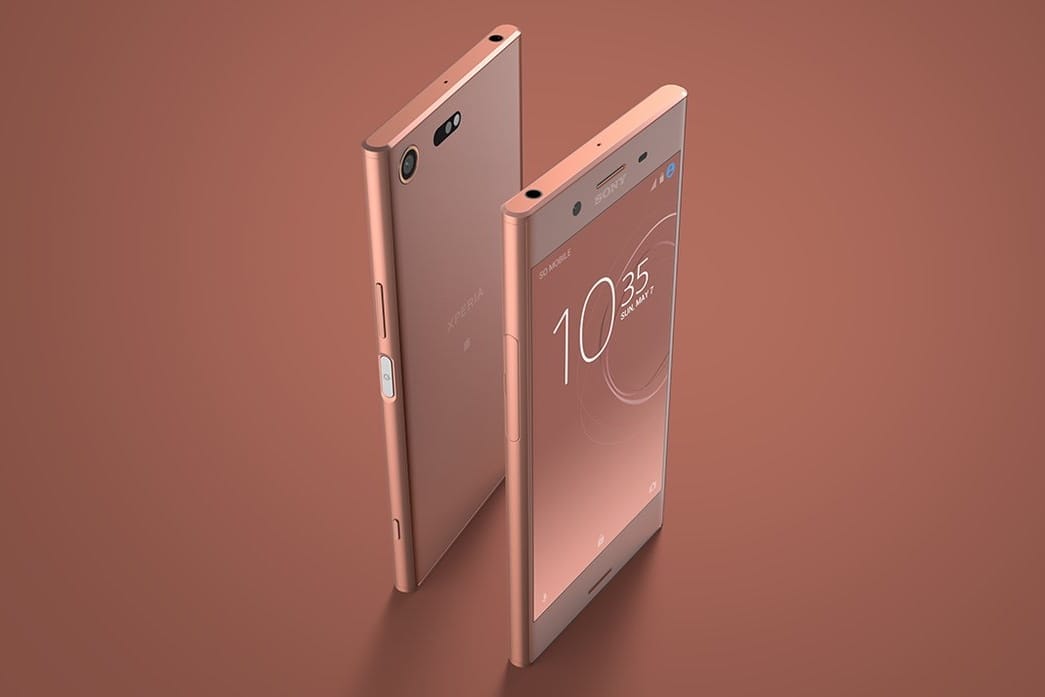
From all this, we can conclude that Sony has managed to revolutionize the market for camera modules for smartphones. Main camera Xperia phone XZ Premium is able to compete even with inexpensive SLR cameras.
You can view the originals of all images in full resolution.
It combines all the ingredients good phone: high performance, beautiful screen, good camera And good time battery life. It remains that 799 euros is too expensive. It has too many flaws to be able to require this kind of betting.
The autonomy is good without being extraordinary. And, above all, the design is completely outdated. The lines can still be elegant, the two sidewalks on the front give the impression that the smartphone is from a different age. For 799 euros, forget it, it's too expensive. Sign up for a free newsletter.
Join us at
Information about the make, model, and alternative names of a particular device, if any.
Design
Information about the dimensions and weight of the device, presented in different units of measurement. Used materials, suggested colors, certificates.
| Width Width information refers to the horizontal side of the device in its standard orientation during use. What is the future for the Japanese manufacturer? High resolution videos are, in short, a significant difference from the competition. The manufacturer confirming the public event did not actually give details about the type of product or products it is launching. In any case, the likelihood that this new smartphone, very high.
| 77 mm (millimeters) 7.7 cm (centimeters) 0.25ft 3.03in |
| Height Height information refers to the vertical side of the device in its standard orientation during use. | 156 mm (millimeters) 15.6 cm (centimeters) 0.51 ft 6.14in |
| Thickness Information about the thickness of the device in different units measurements. | 7.9 mm (millimeters) 0.79 cm (centimeters) 0.03 ft 0.31in |
| Weight Information about the weight of the device in different units of measurement. Finally, the fingerprint sensor. The most important and echo news is the super slow motion. The first in the world in the category of smartphones. And it is this new technology can read data 5 times faster than previous versions. If you consider the current high range to be 240fps, you can see the leap this product has made and it will make others keep up. | 195 g (grams) 0.43 lbs 6.88oz |
| Volume Approximate volume of the device, calculated from dimensions provided by the manufacturer. Refers to devices with the shape of a rectangular parallelepiped. | 94.89 cm³ (cubic centimeters) 5.76 in³ (cubic inches) |
| Colors Information about the colors in which this device is offered for sale. Various sensors for autofocus greatly improve the output. Thanks to the integrated motion detection system. A category that is becoming more and more important and will be further developed in the future. Unfortunately, the printable test package is limited, contains a smartphone and two quick guide guides, and lacks all the classic accessories; in fact there were no chargers, cables or headphones of any kind. The package is made of white cardboard, with a transparent black silk-screen printing that bears the name of the device and the manufacturer on the sides. A little higher rear camera and flashes. The front glass is scratch resistant and has excellent oleophobic treatment. Hardware that takes pictures end user. All this allows you to come at lunchtime without much trouble, as long as the device is not very busy during the day. | The black Chromium Bronze |
| Housing materials The materials used to make the body of the device. | Aluminium alloy Glass |
| Certification Information about the standards to which this device is certified. | IP65 IP68 |
SIM card
The SIM card is used in mobile devices to store data that certifies the authenticity of mobile service subscribers.
Mobile networks
A mobile network is a radio system that allows multiple mobile devices to communicate with each other.
| GSM GSM (Global System for Mobile Communications) is designed to replace the analogue mobile network (1G). For this reason, GSM is often referred to as a 2G mobile network. It is enhanced by the addition of GPRS (General Packet Radio Services) and later EDGE (Enhanced Data rates for GSM Evolution) technologies. | GSM 850 MHz GSM 900 MHz GSM 1800 MHz GSM 1900 MHz |
| UMTS UMTS is short for Universal Mobile Telecommunications System. It is based on the GSM standard and belongs to 3G mobile networks. Developed by 3GPP and its biggest advantage is to provide more speed and spectral efficiency with W-CDMA technology. | UMTS 800 MHz UMTS 850 MHz UMTS 900 MHz UMTS 1900 MHz UMTS 2100 MHz UMTS 800 MHz (B21) |
| LTE LTE (Long Term Evolution) is defined as fourth generation (4G) technology. It is developed by 3GPP based on GSM/EDGE and UMTS/HSPA to increase the capacity and speed of wireless mobile networks. The subsequent development of technologies is called LTE Advanced. | LTE 700 MHz Class 13 LTE 700 MHz Class 17 LTE 800 MHz LTE 850 MHz LTE 900 MHz LTE 1700/2100 MHz LTE 1800 MHz LTE 1900 MHz LTE 2100 MHz LTE 2600 MHz LTE-TDD 1900 MHz (B39) LTE-TDD 2300 MHz (B40) LTE-TDD 2500 MHz (B41) LTE-TDD 2600 MHz (B38) LTE 700 MHz (B12) LTE 700 MHz (B28) LTE 800 MHz (B19) LTE 850 MHz (B26) LTE 700 MHz (B29) LTE 1500 MHz (B32) |
Mobile technologies and data rates
Communication between devices in mobile networks is carried out through technologies that provide different data transfer rates.
Operating system
The operating system is the system software that manages and coordinates the operation of the hardware components in the device.
SoC (System on a Chip)
System on a chip (SoC) includes all the most important hardware components of a mobile device in one chip.
| SoC (System on a Chip) System on a chip (SoC) integrates various hardware components such as processor, graphics processor, memory, peripherals, interfaces, etc., as well as the software necessary for their operation. | Qualcomm Snapdragon 835 MSM8998 |
| Technological process Information about the technological process by which the chip is made. The value in nanometers measures half the distance between the elements in the processor. | 10 nm (nanometers) |
| Processor (CPU) The main function of the processor (CPU) of a mobile device is the interpretation and execution of instructions contained in software applications. | 4x 2.45 GHz Kryo, 4x 1.9 GHz Kryo |
| Processor bit depth The bit depth (bits) of a processor is determined by the size (in bits) of registers, address buses, and data buses. 64-bit processors have higher performance than 32-bit processors, which, in turn, are more productive than 16-bit processors. | 64 bit |
| Instruction Set Architecture Instructions are commands by which the software sets/controls the operation of the processor. Information about the instruction set (ISA) that the processor can execute. | ARMv8-A |
| Number of processor cores The processor core performs program instructions. There are processors with one, two or more cores. Having more cores increases performance by allowing many instructions to be executed in parallel. | 8 |
| Processor clock speed The clock speed of a processor describes its speed in terms of cycles per second. It is measured in megahertz (MHz) or gigahertz (GHz). | 2450 MHz (megahertz) |
| Graphics Processing Unit (GPU) Graphics Processing Unit (GPU) handles calculations for various 2D/3D graphic applications. IN mobile devices ah it is used most often by games, consumer interface, video applications, etc. | Qualcomm Adreno 540 |
| Clock frequency GPU The speed of work is clock frequency GPU, which is measured in megahertz (MHz) or gigahertz (GHz). | 710 MHz (megahertz) |
| Volume random access memory(RAM) Random access memory (RAM) used operating system and all installed applications. Data stored in RAM is lost when the device is turned off or restarted. | 4 GB (gigabytes) |
| Type of random access memory (RAM) Information about the type of random access memory (RAM) used by the device. | LPDDR4X |
| Number of RAM channels Information about the number of RAM channels that are integrated into the SoC. More channels means more high speeds data transmission. | dual channel |
| RAM frequency The frequency of RAM determines its speed, more specifically, the speed of reading / writing data. | 1866 MHz (megahertz) |
Built-in memory
Each mobile device has a built-in (non-removable) memory with a fixed amount.
Memory cards
Memory cards are used in mobile devices to increase the storage capacity for storing data.
Screen
The screen of a mobile device is characterized by its technology, resolution, pixel density, diagonal length, color depth, etc.
| Type/technology One of the main characteristics of the screen is the technology by which it is made and on which the image quality of information directly depends. | IPS |
| Diagonal For mobile devices, the screen size is expressed in terms of its diagonal length, measured in inches. | 5.5in 139.7 mm (millimeters) 13.97 cm (centimeters) |
| Width Approximate Screen Width | 2.7in 68.49 mm (millimeters) 6.85 cm (centimeters) |
| Height Approximate Screen Height | 4.79in 121.76 mm (millimeters) 12.18 cm (centimeters) |
| Aspect Ratio The ratio of the dimensions of the long side of the screen to its short side | 1.778:1 16:9 |
| Permission Screen resolution indicates the number of pixels vertically and horizontally on the screen. More a high resolution means sharper image detail. | 2160 x 3840 pixels |
| Pixel Density Information about the number of pixels per centimeter or inch of the screen. Higher density allows information to be shown on the screen in clearer detail. | 801ppi (pixels per inch) 314 ppcm (pixels per centimeter) |
| Color depth Screen color depth reflects the total number of bits used for the color components in a single pixel. Information about the maximum number of colors the screen can display. | 24 bit 16777216 flowers |
| Screen area Approximate percentage of screen space on the front of the device. | 69.65% (percentage) |
| Other characteristics Information about other functions and features of the screen. | capacitive Multitouch Scratch resistance |
| Corning Gorilla Glass 5 Triluminos display for mobile X-Reality display Dynamic contrast enhancement 1000:1 contrast ratio 700 cd/m² 138% sRGB |
Sensors
Different sensors perform different quantitative measurements and convert physical indicators into signals that are recognized by the mobile device.
Main camera
The main camera of a mobile device is usually located on the back of the case and is used for taking photos and videos.
| Sensor model | Sony IMX400 Exmor RS |
| Sensor type | |
| ISO (light sensitivity) | 100 - 12800 |
| Diaphragm | f/2.0 |
| Focal length | 4.4 mm (millimeters) |
| Flash type The most common types of flashes in mobile devices cameras are LED and xenon flashes. LED flashes give a softer light and, unlike brighter xenon flashes, are also used for video shooting. | LED |
| Image Resolution One of the main characteristics of mobile device cameras is their resolution, which indicates the number of pixels in the horizontal and vertical direction of an image. | 5057 x 3796 pixels 19.2 MP (megapixels) |
| Video resolution Information about the maximum supported resolution for video recording by the device. | 3840 x 2160 pixels 8.29 MP (megapixels) |
Information about the maximum number of frames per second (fps) supported by the device when shooting video at the maximum resolution. Some of the main standard shooting and video playback speeds are 24p, 25p, 30p, 60p. | 30 fps (frames per second) |
| Characteristics Information about other software and hardware features related to the main camera and improving its functionality. | autofocus Burst shooting digital zoom Optical Image Stabilization geo tags panoramic shooting HDR shooting Touch focus Face recognition Adjusting the white balance ISO setting Exposure compensation Self-timer Scene Selection Mode |
| Pixel size - 1.22 µm hybrid autofocus Triple Image Sensing RGBC-IR sensor 6-element lens Wide angel G-lens Focal length (35 mm equivalent) - 25 mm 720p@960fps |
Additional camera
Additional cameras are usually mounted above the screen of the device and are mainly used for video calls, gesture recognition, etc.
| Sensor Model Information about the manufacturer and model of the photo sensor used in the device's camera. | Sony Exmor RS |
| Sensor type Digital cameras use photo sensors to take pictures. The sensor, as well as the optics, is one of the main factors in the quality of a camera in a mobile device. | CMOS (complementary metal-oxide semiconductor) |
| Sensor size Information about the size of the photosensor used in the device. Typically, cameras with a larger sensor and lower pixel density offer more high quality images despite the lower resolution. | 4.69 x 3.52 mm (millimeters) 0.23in |
| Pixel size The smaller pixel size of the photosensor allows more pixels to be used per unit area, thus increasing resolution. On the other hand, a smaller pixel size can have a negative impact on image quality when high levels light sensitivity (ISO). | 1.127 µm (micrometers) 0.001127 mm (millimeters) |
| crop factor The crop factor is the ratio between the dimensions of a full-frame sensor (36 x 24mm, equivalent to a frame of standard 35mm film) and the dimensions of the device's photosensor. The number shown is the ratio of the diagonals of the full frame sensor (43.3 mm) and the photo sensor of the specific device. | 7.38 |
| ISO (light sensitivity) ISO values determine the light sensitivity level of the photosensor. A lower value means weaker light sensitivity and vice versa - higher values mean higher light sensitivity, i.e. better ability of the sensor to work in low light conditions. | 100 - 6400 |
| Diaphragm Aperture (f-number) is the size of the aperture opening that controls the amount of light reaching the photosensor. A lower f-number means the aperture is larger. | f/2.0 |
| Focal length Focal length is the distance in millimeters from the photosensor to the optical center of the lens. There is also an equivalent focal length that provides the same field of view with a full frame camera. | 2.98 mm (millimeters) 21.99 mm (millimeters) *(35 mm / full frame) |
| Image Resolution Information about the maximum resolution of the secondary camera when shooting. In most cases, the resolution of the secondary camera is lower than that of the main camera. | 4160 x 3120 pixels 12.98 MP (megapixels) |
| Video resolution Information about the maximum supported video resolution additional camera. | 1920 x 1080 pixels 2.07 MP (megapixels) |
| Video - frame rate/frames per second. Information about the maximum number of frames per second (fps) supported by the optional camera when shooting video at the maximum resolution. | 30 fps (frames per second) |
Audio
Information about the type of speakers and audio technologies supported by the device.
Radio
The radio of the mobile device is a built-in FM receiver.
Location determination
Information about navigation and location technologies supported by the device.
WiFi
Wi-Fi is a technology that provides wireless communication to transfer data over short distances between different devices.
Bluetooth
Bluetooth is a standard for secure wireless data transfer between different types of devices over short distances.
| Version There are several Bluetooth versions, with each subsequent one improving communication speed, coverage, making it easier to discover and connect devices. Information about the Bluetooth version of the device. | 5.0 |
| Characteristics Bluetooth uses different profiles and protocols to provide more fast exchange data, power savings, improved device discovery, and more. Some of these profiles and protocols that the device supports are shown here. | A2DP (Advanced Audio Distribution Profile) AVRCP (Audio/Visual remote control profile) DIP (Device ID Profile) GAVDP (Generic Audio/Video Distribution Profile) GAP (Generic Access Profile) HDP (Health Device Profile) HFP (Hands Free Profile) HID (Human Interface Profile) HSP (Headset Profile) LE (Low Energy) MAP (Message Access Profile) OPP (Object Push Profile) PAN (Personal Area Networking Profile) PBAP/PAB (Phone Book Access Profile) SPP (Serial Port Protocol) |
USB
USB (Universal Serial Bus) is an industry standard that allows different electronic devices to communicate.
Headphone jack
This is an audio connector, which is also called an audio jack. The most widely used standard in mobile devices is the 3.5mm headphone jack.
Connecting devices
Information about other important connection technologies supported by the device.
Browser
A web browser is a software application for accessing and viewing information on the Internet.
| Browser Information about some of the key features and standards supported by the device's browser. | HTML HTML5 CSS 3 |
Mobile devices support various audio file formats and codecs that store and encode/decode digital audio data, respectively.
| Formats/codecs sound files A list of some of the main audio file formats and codecs that are standardly supported by the device. | AAC (Advanced Audio Coding) AAC+ / aacPlus / HE-AAC v1 AMR / AMR-NB / GSM-AMR (Adaptive Multi-Rate, .amr, .3ga) AMR-WB (Adaptive Multi-Rate Wideband, .awb) aptX / apt-X eAAC+ / aacPlus v2 / HE-AAC v2 FLAC (Free Lossless Audio Codec, .flac) M4A (MPEG-4 Audio, .m4a) MIDI MP3 (MPEG-2 Audio Layer II, .mp3) OGG (.ogg, .ogv, .oga, .ogx, .spx, .opus) WMA (Windows Media Audio, .wma) WAV (Waveform Audio File Format, .wav, .wave) LDAC DSEE HX DSD |
Video file formats/codecs
Mobile devices support various video file formats and codecs, which store and encode/decode digital video data, respectively.
Battery
Mobile device batteries differ from each other in their capacity and technology. They provide the electrical charge they need to function.
| Capacity The capacity of a battery indicates the maximum charge it can store, measured in milliamp-hours. | 3230 mAh (milliamp-hours) |
| Type The type of battery is determined by its structure and, more specifically, by the chemicals used. Exist different types batteries, with lithium-ion and lithium-ion polymer batteries most commonly used in mobile devices. | Li-polymer (Li-polymer) |
| Technology fast charging Fast charging technologies differ from each other in terms of energy efficiency, maintained output power, control over the charging process, temperature, etc. device, battery and Charger must be compatible with respect to fast charging technology. | Qualcomm Quick charge 3.0 |
| Characteristics Information about some additional features of the device's battery. | fast charging Fixed |
Specific Absorption Rate (SAR)
SAR levels refer to the amount of electromagnetic radiation absorbed by the human body while using a mobile device.
| SAR level for head (EU) The SAR level indicates maximum amount electromagnetic radiation that the human body is exposed to when holding a mobile device next to the ear in a conversation position. In Europe, the maximum allowable SAR value for mobile devices is limited to 2 W/kg per 10 grams of human tissue. This standard established by CENELEC in accordance with IEC standards following ICNIRP guidelines of 1998. | 1.21 W/kg (watt per kilogram) |
| Body SAR (EU) The SAR level indicates the maximum amount of electromagnetic radiation that the human body is exposed to when holding a mobile device at hip level. The maximum allowed SAR value for mobile devices in Europe is 2 W/kg per 10 grams of human tissue. This standard has been established by CENELEC following the 1998 ICNIRP guidelines and IEC standards. | 1.16 W/kg (watt per kilogram) |
| Head SAR (US) The SAR level indicates the maximum amount of electromagnetic radiation that the human body is exposed to when holding a mobile device near the ear. The maximum value used in the US is 1.6 W/kg per gram of human tissue. Mobile devices in the US are controlled by the CTIA and the FCC conducts tests and sets their SAR values. | 0.78 W/kg (watt per kilogram) |
| Body SAR (US) The SAR level indicates the maximum amount of electromagnetic radiation that the human body is exposed to when holding a mobile device at hip level. The highest acceptable SAR value in the US is 1.6 W/kg per gram of human tissue. This value is set by the FCC, and the CTIA controls whether mobile devices comply with this standard. | 0.44 W/kg (watt per kilogram) |

